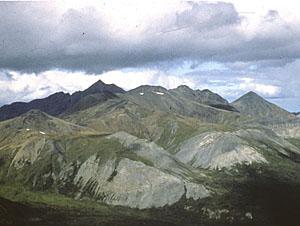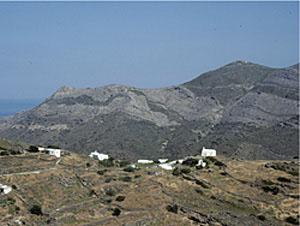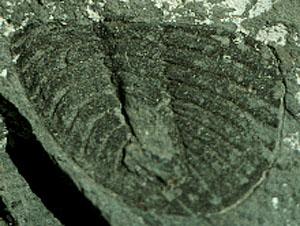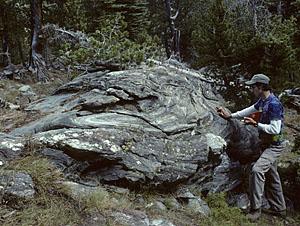Tekla Harms' Research Opportunities for Students
I have a number of long-term research projects located around the globe. While they may seem disparate, each in its own way seeks to understand the evolution of mountain belts and the interactions of plate boundaries in creating those belts. Detailed structural analysis - looking at the small scale evidence of major crustal displacement - is one of the tools I use to investigate mountain belts.
 | Northern British Columbia and southern Yukon: Work here addresses the Late Paleozoic (350 to 250 million years ago) history of the Cordilleran mountain belt - a time when oceanic terrains that would later be accreted to the edge of the continent were developing offshore. What was their character, and their paleogeographic position leading up to collision with North America? |
| Oceanic rocks underlie the somber-colored peak tops. They have been thrust up over the lighter grey limestones of the Paleozoic North American continent that make up the lower elevations. | |
 | Syros, Greece: How did the subduction zone rocks on this Aegean island get exhumed to the surface from the depths (30 km?) at which they experienced distinctive blueschist facies metamorphism? |
| This dry hill slope reveals a series of normal faults that offset and extend nearly horizontal, light colored limestone layers. The Aegean sea is visible in the background. | |
 | Kootenay Arc, NE Washington: The collision of various micro-plates with the Pacific margin of North America through the Mesozoic and early Cenozoic (150 to 50 million years ago) caused the growth of mountains by shortening and thickening the crust. A series of research projects in northeastern Washington seeks to quantify the amount of shortening involved in mountain building by looking at deformed markers, like this skewed trilobite. |
| Tail segment of a deformed trilobite from Metalline Falls, Washington. | |
 | Tobacco Root Mountains, Montana: What do sheath folds - a unique form of fold - have to tell us about the mechanisms of deformation and mountain building? How do these unusual folds form? A beautifully exposed sheath fold in the Tobacco Root Mountains of Montana serves as a case study for the pattern of flow involved in sheath fold formation which we can determine by the analysis of microstructures in the fold. |
| A sheath fold, like the one pictured above, has a strongly curved hinge line. A section cut across the fold shows a <-shaped hinge on the left, which is folded back to appear as a >-shaped nose on the right, under the hand of the geology student. |